ATMOSPHERIC SYSTEMS
For older, medium-efficiency gas-fired heating appliances (furnaces, boilers, water heaters, etc.) combustion exhaust venting is similar:

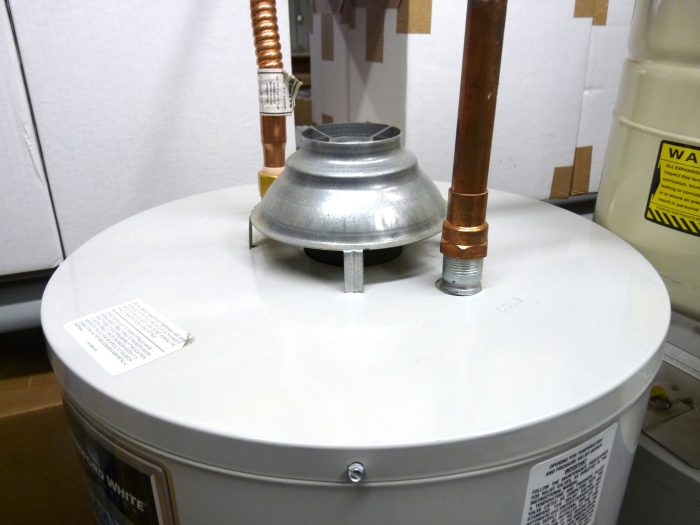
Draft Hood
\
- Just above the appliance, a draft hood, also called a draft diverter, helps move the exhaust gases up the vent to the exterior, and helps prevent wind gusts from affecting the gas burner or pilot light (older systems). The gap between the top of the heating appliance and the bottom of the draft hood is typically 1/2″-1″. The hood should be securely attached to the top of the heating appliance.
- The vent connector is a 4-inch, single-wall duct that extends from the draft hood the the base of the combustion exhaust vent. It should slope upward at a minimum of 1/4-inch per foot. Lower section should fit inside upper sections.
- The vent connector connects to the bottom of the combustion exhaust vent; a double-wall B-vent that should have at least a 1-inch clearance to combustibles, and that extends all the way to the roof. A white residue on either of these vents indicates poor venting and should be mentioned in a report.
From the International Fuel Gas Code 503.6.5 Gas Vent Terminations
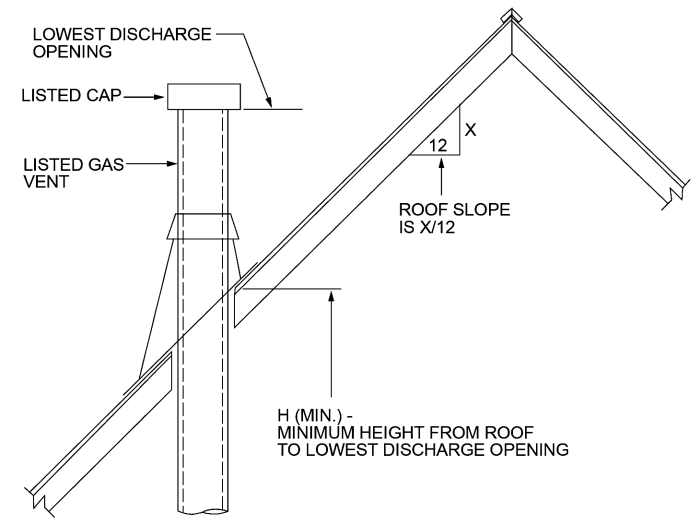
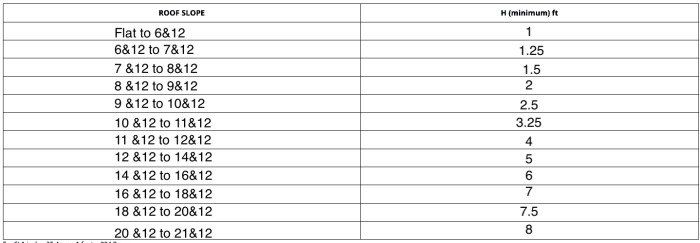
The vent must extend above the roof a distance that depends on the roof pitch.
Poor venting can allow backdrafting that pulls the toxic products of combustion back down the vent into indoor air.
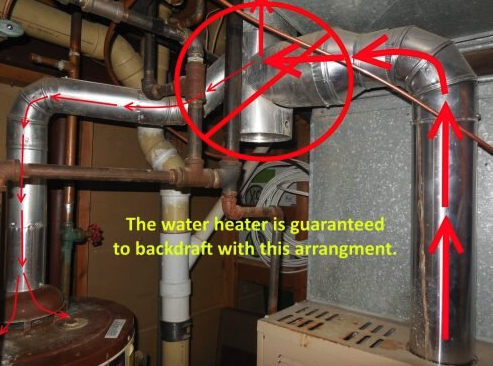
Furnace and water heater vent connectors that connect to the vent directly opposite each other will cause backdrafting.
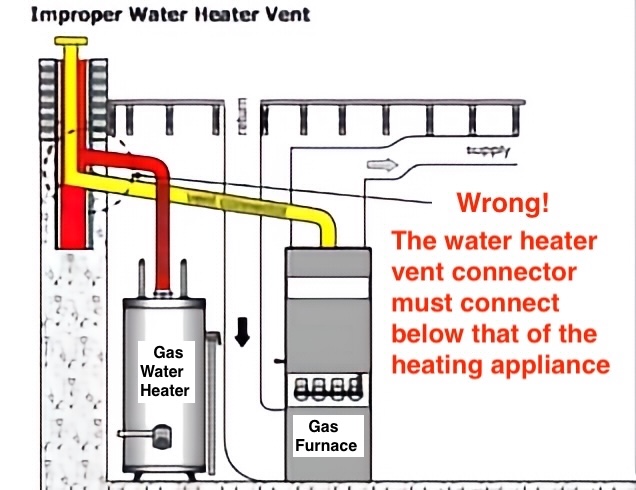
To avoid backdrafting, the furnace vent connector should connect above the water heater vent connector.
HIGH-EFFICIENCY SYSTEMS
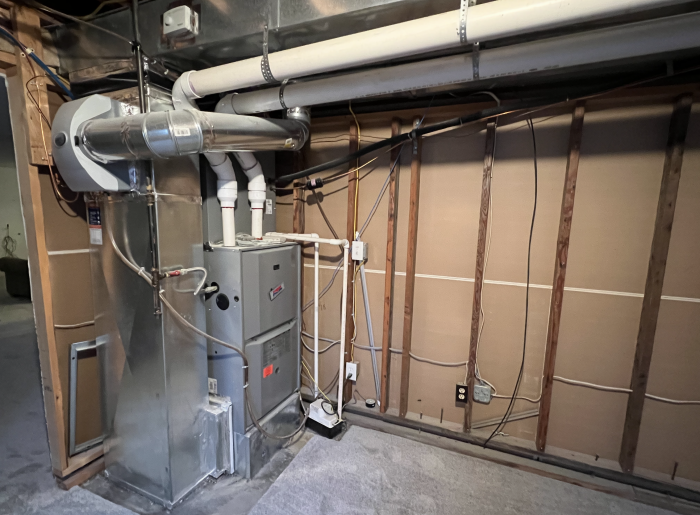
Because exhaust gases are cooler, high efficiency heating appliances can use plastic ducts.

High efficiency heating appliances produce copious amounts of condensation that collects in a tray and must be discharged by a pump to a floor drain or to the exterior.
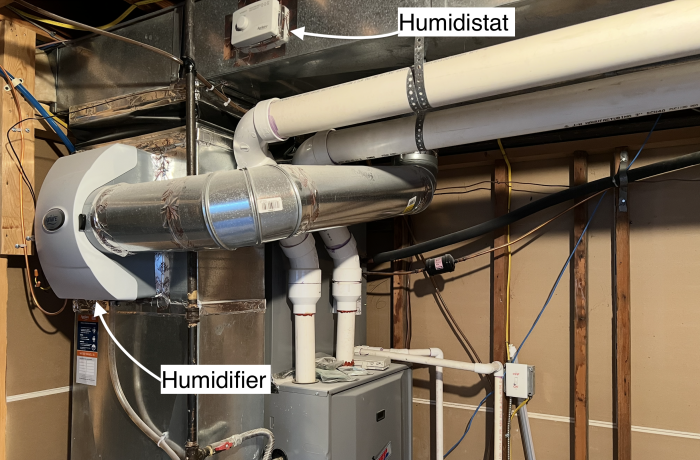
In arid climates, a humidifier, controlled by a humistat, may be installed to add moisture vapor to indoor air.
